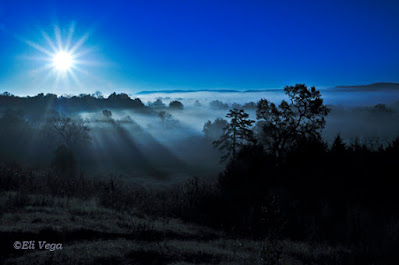HDR PHOTOGRAPHY
Most of my HDR work is for my commercial work, mainly for the hospitality industry. For all other types of photography, however, I don't do much with HDR.
Let's start at the beginning. HDR photographic digital photography has been with us since around the turn of this century. High Dynamic Range. I will try to explain it in simple terms.
During film days, the terminology was film "latitude." Some films had more latitude, or ability, to give us good exposures for both the darkest and brightest areas of the scene. They weren't perfect, but much better than other films. If a scene has high extremes between dark areas and bright areas, we say it has high dynamic range. Neither films nor sensors are capable of doing a good job in those given conditions. Enter HDR photography.
HDR photography has a process, and it involves a combination of taking pictures, combined with the use of photo editing software. The most common process is this:
1) Take up to seven (7) photos of the same scene, giving a different exposure to each of the seven images. For example, take pictures at -3 stops, at -2 stops, -1 stop, at -0-, at +1 stop, +2 stops, and at +3 stops. That's seven images, ranging from extremely dark-looking images to extremely bright-looking images.
2) With the use of HDR software, all seven images are opened in the software--all seven! The software is designed to take all seven differently-exposed images and magically narrow the high dynamic range between them to give us a great-looking image with no washed-out areas or extremely dark areas--something films or sensors do not have the latitude to accomplish on their own. That's a lot of work for a piece of software to do, huh?
When we try to take pictures of scenes that have a wide range of dark areas and bright areas, without the use of HDR technology, we are often disappointed. We will see some blown-out (over-exposed) areas as well as some extremely dark shadows. HDR software corrects that.
I don't like the look of most HDR-ed images. I can hear you now, "What? After all that explanation about the magic of HDR technology, and you don't like it?" Let me explain. The end result of combining seven differently-exposed images, coupled with extra post-processing with that same software, produces an image that, to me, looks like an illustration, an architect's rendering, or a colored etching, rather than a photograph. Now, true, some folks like that look. I don't.
I guess I wouldn't mind photographic illustrations or "etchings" so much if photographers admitted that the end result was accomplished with computerized HDR processing. But that's not what happens. They are usually sold or shown as a photograph.
In the art world, by contrast, we see watercolors, oils, pen & ink, acrylics, and, yes, even mixed media. They all stand on their own.
Photography has evolved by leaps and bounds, especially since 1998 or so. But, maybe because it is a relatively new field, compared to art-on-canvas, we have not come up with a name for photography off-shoots, like HDR and other techniques. We just lump everything into one medium we call "photographs" or "photography."
So, back to my dislike of that "illustration/rendering/etching" look.
This HDR-ed image has that "look" I've been talking about.
This image, though processed with the same software, looks more natural. They may not be the best examples, but they illustrate my point.
According to a lot of the literature on the subject, HDR is intended images to replicate what our eyes see, that is, no shadows. However, we do indeed see shadows in many daylight scenarios. Additionally, as a photo artist, I like shadows. They give my images that 3-dimensional feel. Too many HDR shadowless images I have seen look too "flat," because there are no shadows. They are also void of emotion; of feelings. I prefer to translate emotions and feelings onto my images. I don't want the scenes I photograph to look "documented."
So, okay, I'm not very fond of HDR. Do I ever apply HDR to my images? Yes, but only under two conditions. 1) Commercial work, where clients don't like shadows--they want every inch of the image to have as much detail as possible. 2) Yes, for some scenarios when the spectrum between darks and lights is too extreme. However, even when I feel I have to, I don't want them to look like an illustration or an architect's rendering.
So, how do I use HDR and still maintain the look of a photograph? I use a modified process. I call it my "7/3 formula." I take seven images, just the way I described previously. However, and here's the key, instead of opening all seven in my HDR software, I only open three! Which three I use is subjective. I usually use the one shot at -2, -0-, and +2. The others are there just in case I don't get what I like. And I do use other combinations until I get what I like. Bottom line: always just three. Below are just a few examples that gave me that "natural" feel.







